

Part I: Death of the Voyager
The Voyager
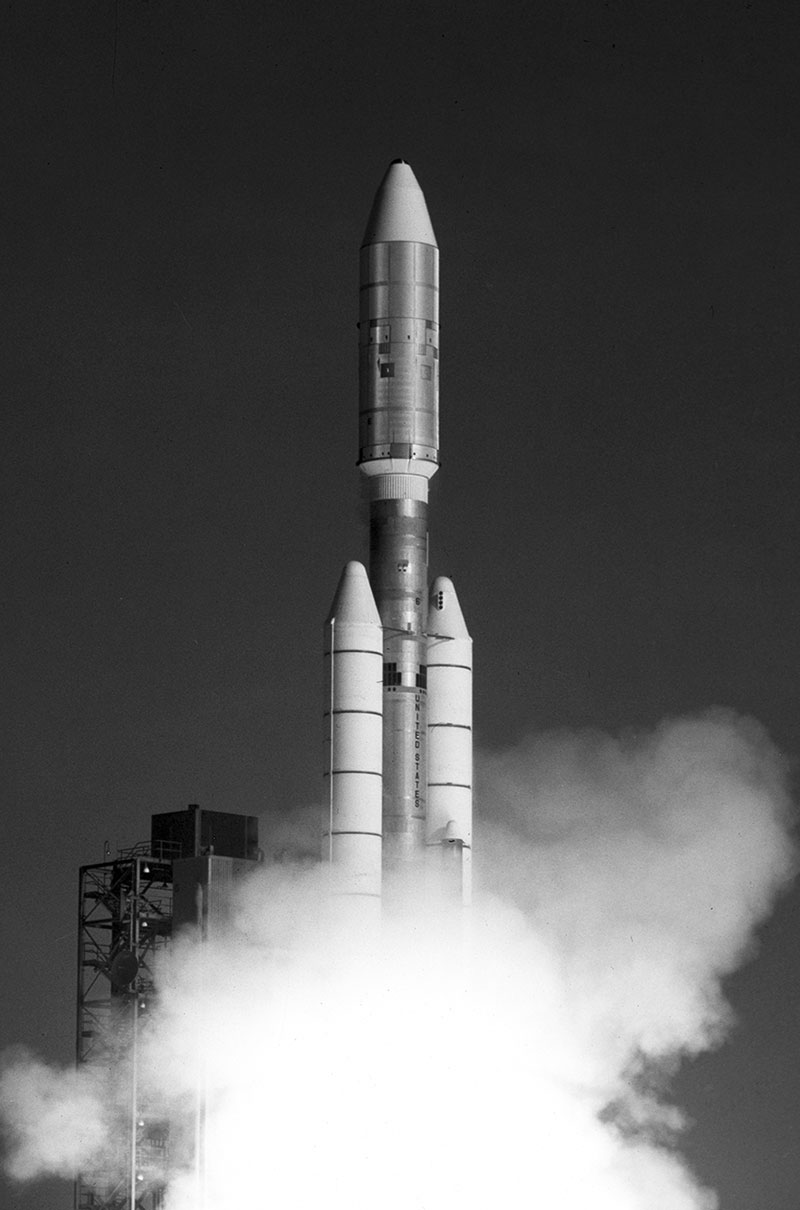
In the closing days of the European Theatre of World War II, Hanns Martin Schleyer who at the time was a Second Lieutenant in the German army, fled the Austrian city of Prague after the uprising that occurred against the local puppet government. He made his way north to the German fatherland with hopes of surrendering himself to allied British or American forces; as opposed to the Russian communists that were moving on the city to liberate it.
Along his route, Schleyer was intercepted by a legendary Lieutenant Colonel, Otto Skorzeny. The same SS officer that personally led the raid which freed Italian dictator Benito Mussolini from his Campo Imperatore alpine prison in 1943, Skorzeny would later play a key role in the ODESSA network of former SS that helped to move high ranking Nazis throughout the world via their infamous ratlines. He was a mysterious man. A fencing duel in his younger days left a menacing scar slashed across the side of his face. A wartime adventurer of sorts, planning and executing a variety of clandestine missions throughout the Allied occupied areas, Skorzeny was now tasked with seizing Schleyer and his Osenberg knowledge for one final German offensive.
Mussolini rescued from Campo Imperatore, 1943.09.12
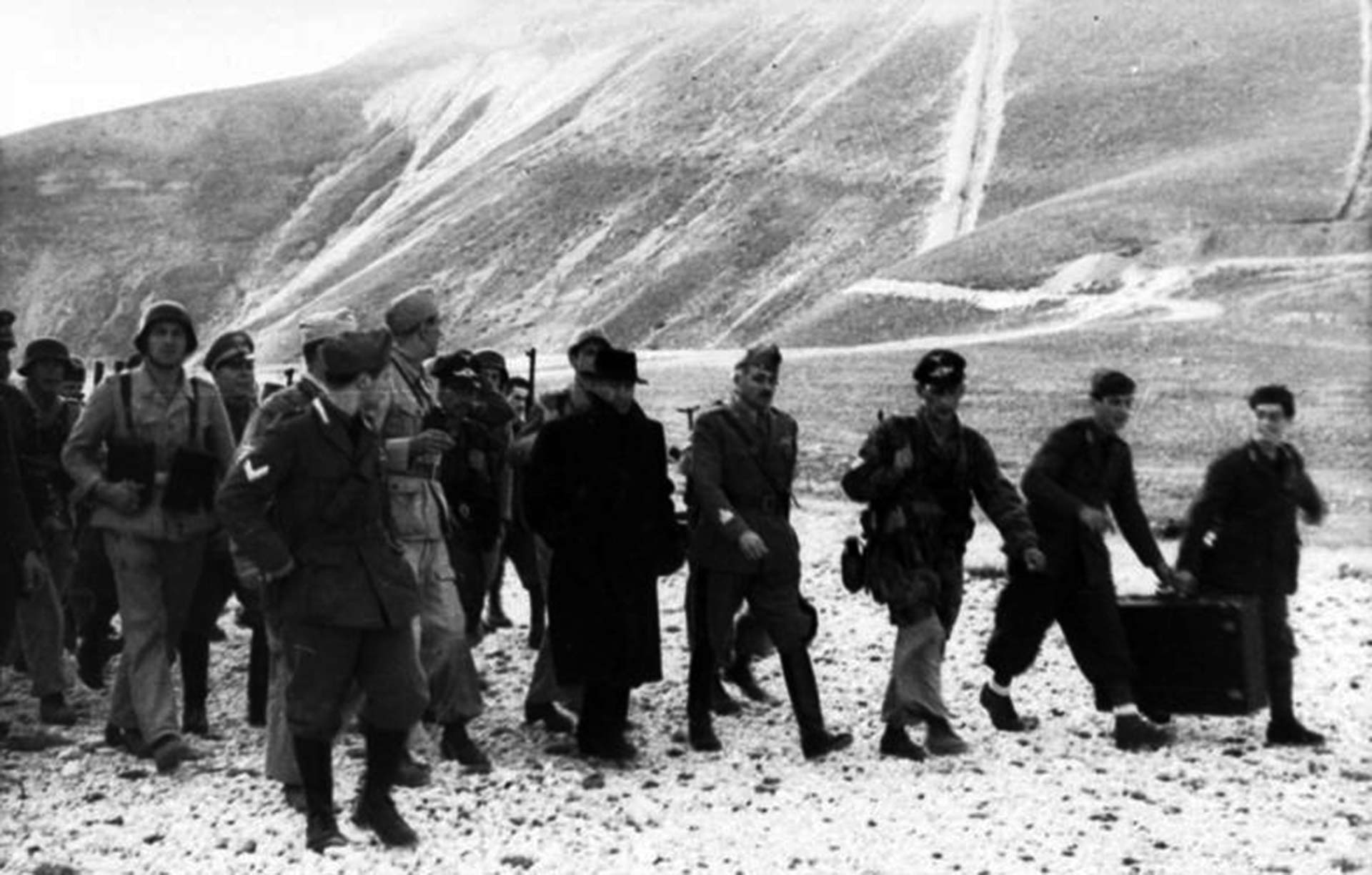
Mussolini rescued from Campo Imperatore, 1943.09.12
HERCULES
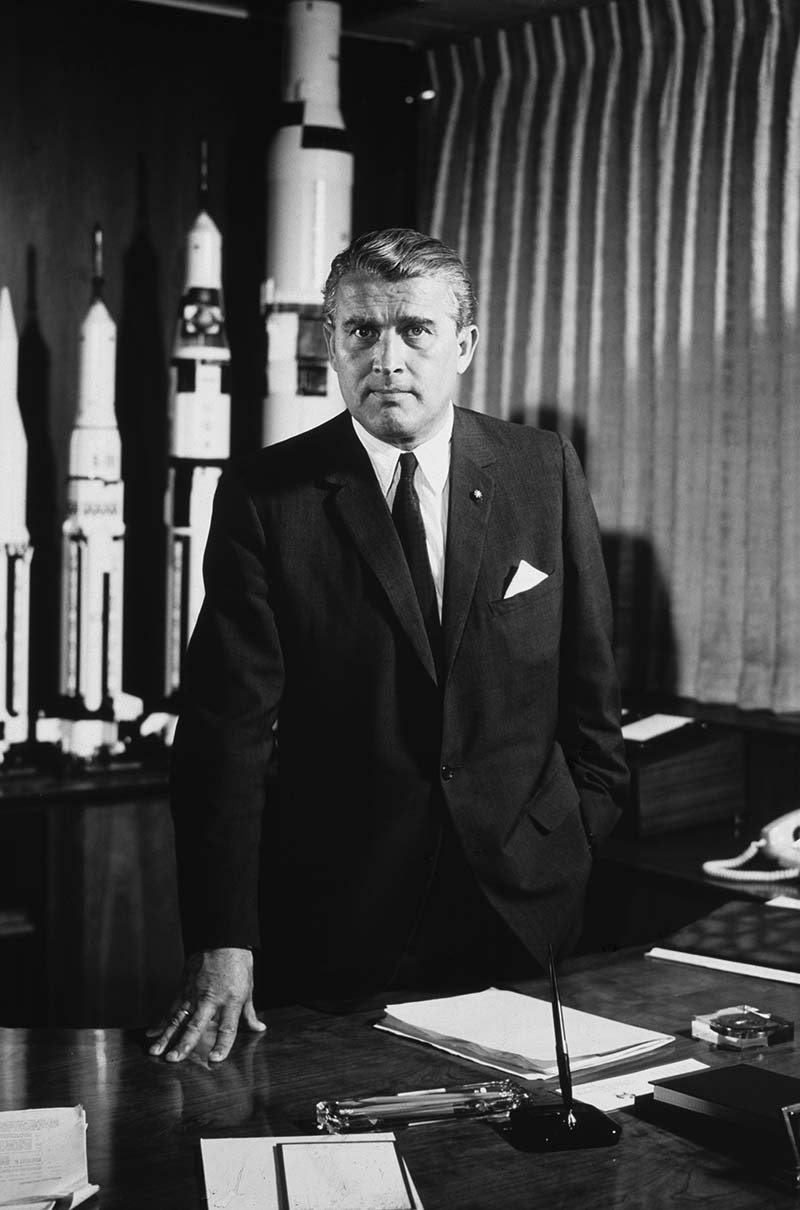
Operation Hercules was a top secret Nazi program initiated to develop the most advanced form of human being the world had ever known. In essence, it was a scientific experiment to create a demigod. A mythical creature of antiquity said to be the combination of a god and a man, both Heracles and Achilles were born of this love. They are prime examples of the concept that the superstitious, history obsessed, Nazis had been experimenting with since the early days of the organization.
In June 1944, as the Axis powers had been effectively stalled and the Allies were preparing for the final push to eliminate the enemy, Operation Hercules was devised by Heinrich Himmler’s Ahnenerbe research society to develop a super man for one final push in battle. The plan according to the Ahnenerbe researchers was to create a device, a much more advanced version of the V-2 rocket, that could be used to exit Earth’s atmosphere and enter the heavens beyond. Inside of the rocket, a special payload would be on board. However, unlike the explosive devices that would normally be carried, the Hercules rockets would contain the semen of male humans. Specifically, the seed would be donated by members of the Aryan race, and even more specifically, from members of the Nazi SS that have proven themselves to be great warriors and loyal Aryans such as Otto Skorzeny.
The plan was to launch the specimens into space, and thus transform them somehow into a more powerful ingredient that could then be inserted into a pure Aryan specimen back on Earth. The science behind the mission seemed like a long shot at best, and was based primarily on racist superstition. At this point no human-made object had ever left the atmosphere of Earth; much less sent back any kind of scientific data to conclude that an experiment of this magnitude had any kind of grounding in reality. Furthermore, the rockets that had been built up to this point were designed for one way travel. The technology of the time was so crude, and still based on the fundamentals of offensive warriors, that considerations were not even made as to how the specimens would return to earth.
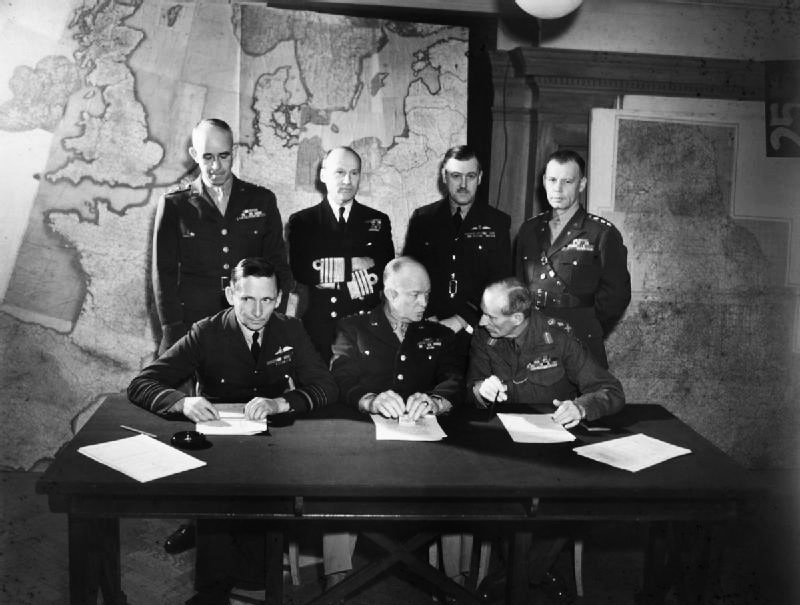
At least for the Germans, the operation was a pipe dream. The British and American forces had already landed on Normandy beach. Soon, the Belorussian Offensive on the Eastern Front would overcome the Germans with not only the blood of their countrymen, but the red of their invader’s Russian souls. The scientists who had been instrumental in creating the horrible V-2 no longer had the resources to develop a project of such magnitude. Ultimately, the only thing accomplished of the Hercules plan was the collection of the donor’s seed.
The first photograph taken from space, 1946.10.24
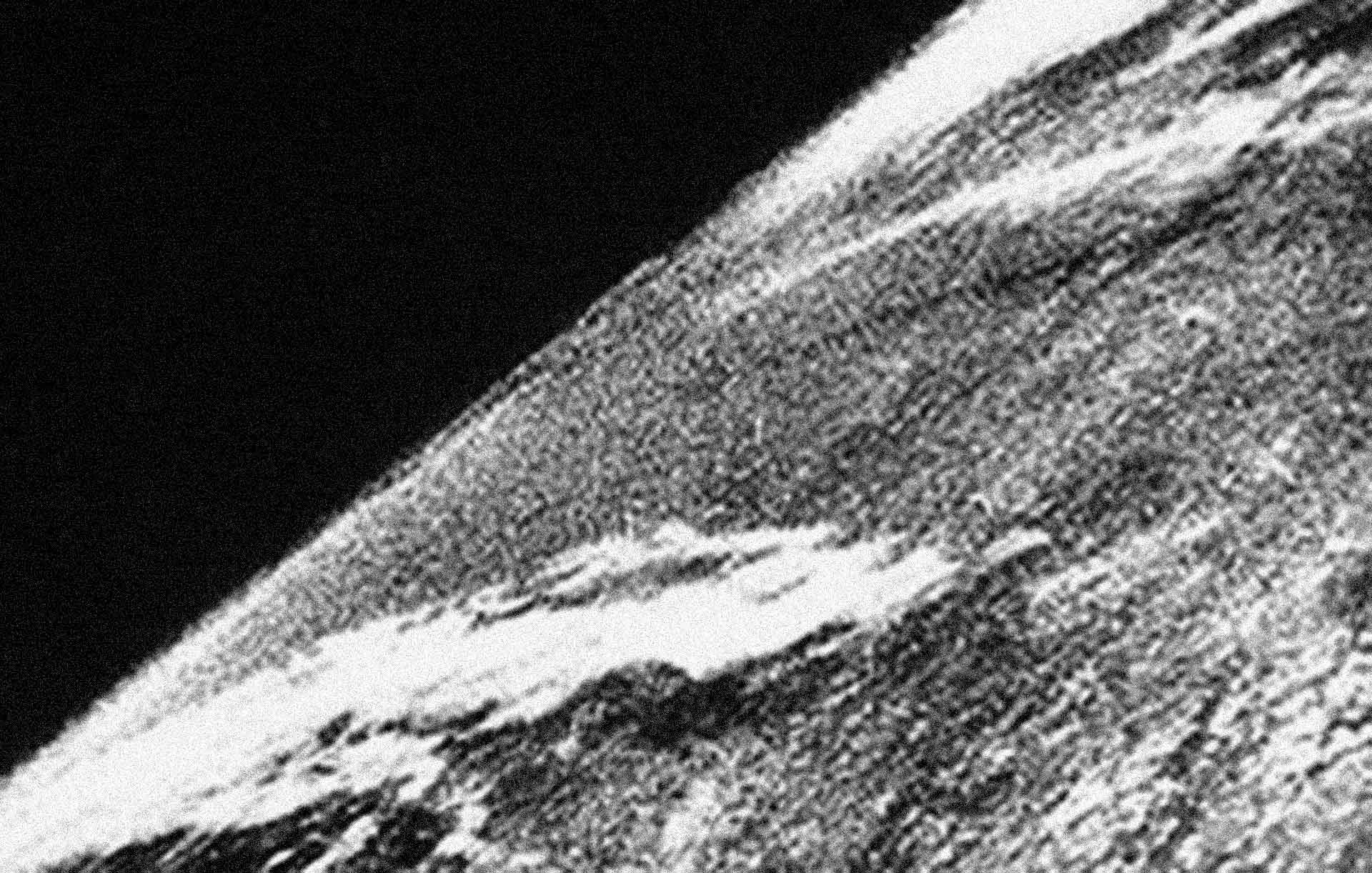
The first photograph taken from space, 1946.10.24
THE COMMANDO AND THE SWISS
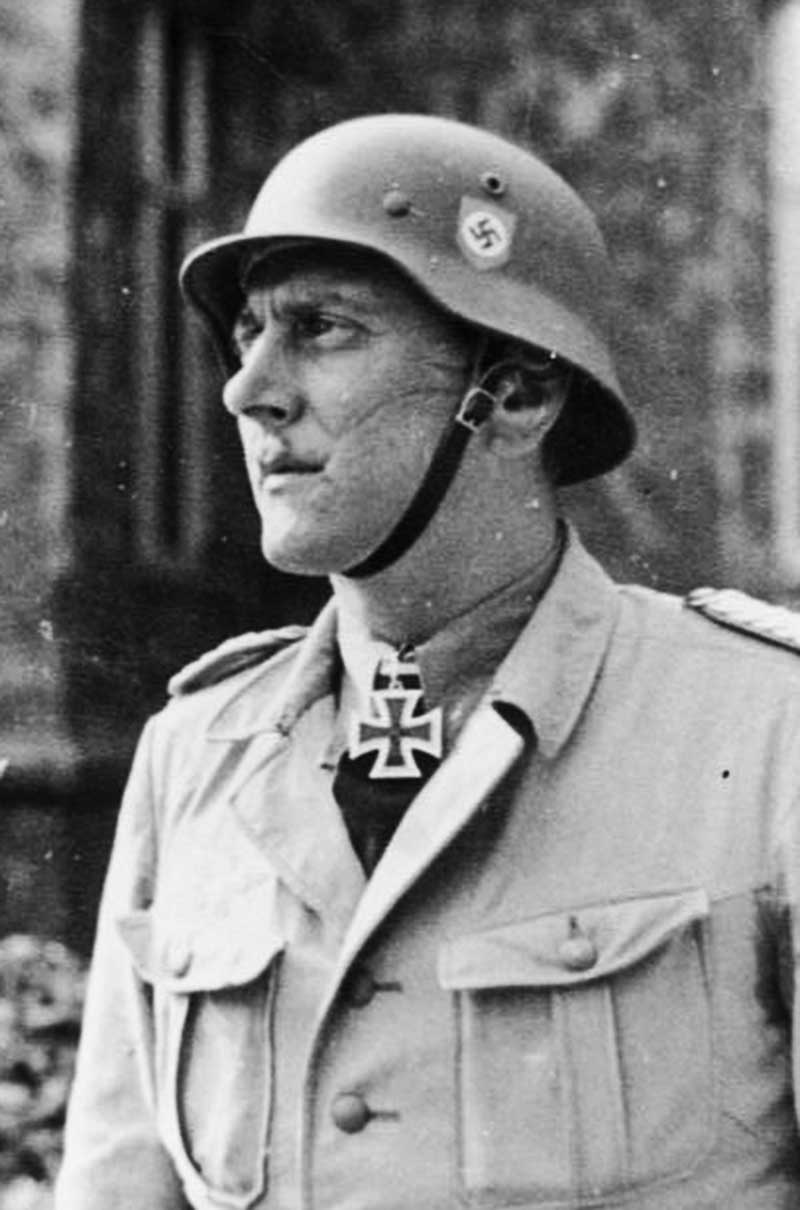
April 30th, 1945, the supreme leader of the German Reich, Adolf Hitler, after poisoning his beloved German Shepherds, committed suicide by shooting himself in the temple with a single explosion from his Walther PPK handgun; ironically, this weapon would later be made popular as the sidearm of Ian Fleming’s legendary character, James Bond. Now the war was effectively over and the cleanup was all that remained.
May 8th, 1945, as the Allied victory in Europe was being officiated with the surrender of Berlin, Hanns Martin Schleyer was intercepted by Otto Skorzeny somewhere deep within the clutches of the Bavarian Black Forest. In the same woods that inspired the cruelty of the Brother’s Grimm fairy tales, Schleyer had been in hiding after fleeing the Russian advance just three days earlier. Skorzeny, acting on behalf of the early ODESSA organization that would later help Nazi officials such as Adolph Eichmann escape the justice of the Allied forces, was on a mission to retrieve Schleyer’s Osenberg list for the purpose of reviving the Hercules project outside of the Fatherland.
An important financier of Skorzeny was a Swiss man named François Genoud. Born to an already independently wealthy family, Genoud would later gain notoriety for publishing the diaries of Nazi Propagandist, Joseph Goebbels, and making a further fortune. An early supporter of the Aryan cause, Genoud initially met Hitler, in 1932, at a Bonn hotel and was instantly smitten. To say that Hitler mesmerized the seventeen-year-old Swiss would be an understatement. Genoud worshiped the leader and, like so many others, vowed to continue the causes important to the Nazi movement even after the war's end.
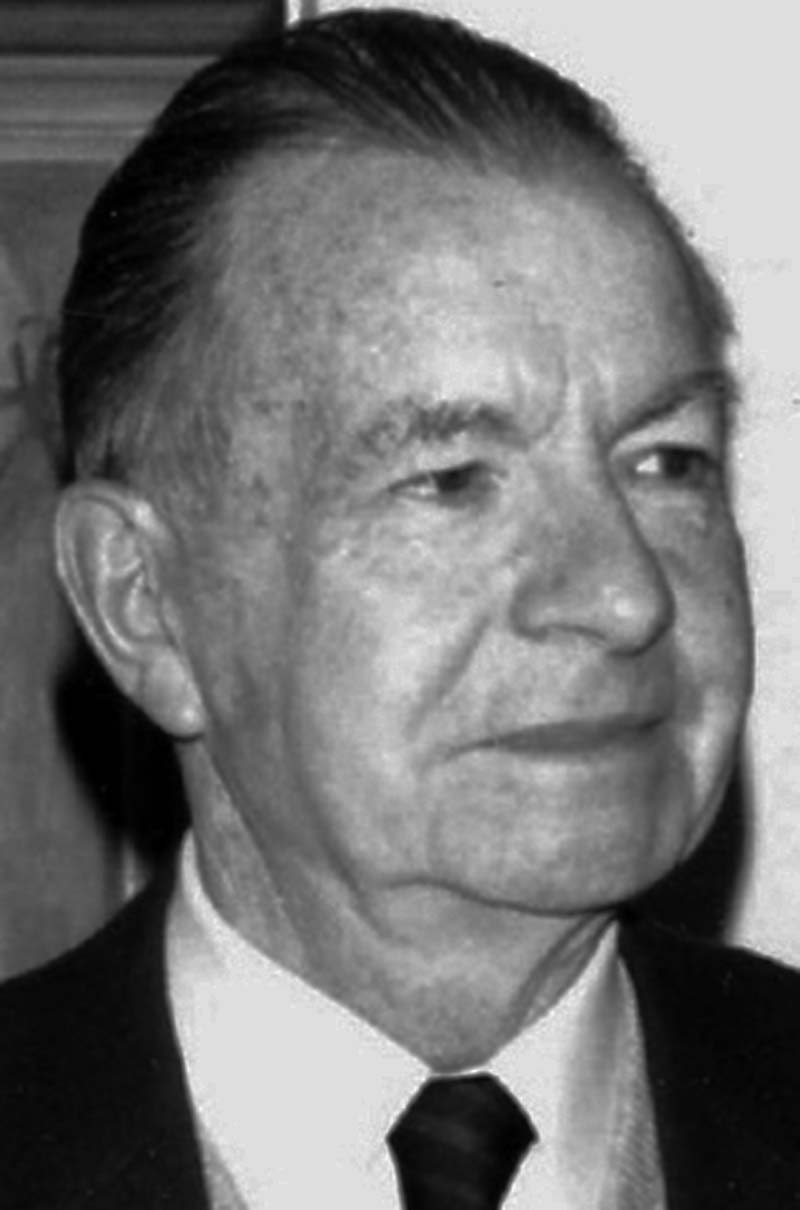
Having set himself up as the principle financial manager of the Third Reich’s large stash of Swiss assets at the conclusion of the war, Genoud had a seemingly endless supply of money from which to draw upon in order to complete this task. And so, with Genoud’s backing, the six and a half foot tall German commando, Skorzeny, tracked down Schleyer, the young voyager, and obtained the knowledge of his Osenberg list to be utilized in conjunction with the early research that had been accomplished on the Hercules project. Upon securing the names of the scientists that would soon be evacuated to the west, Skorzeny clandestinely met with the major figures on the list and discussed with them the goals of Operation Hercules. It is unknown to what extent, or how, Skorzeny manipulated the scientists into bending to his will of continuing the project overseas but, as time would come to show, he was quite persuasive.
Otto Skorzeny, 1945.02
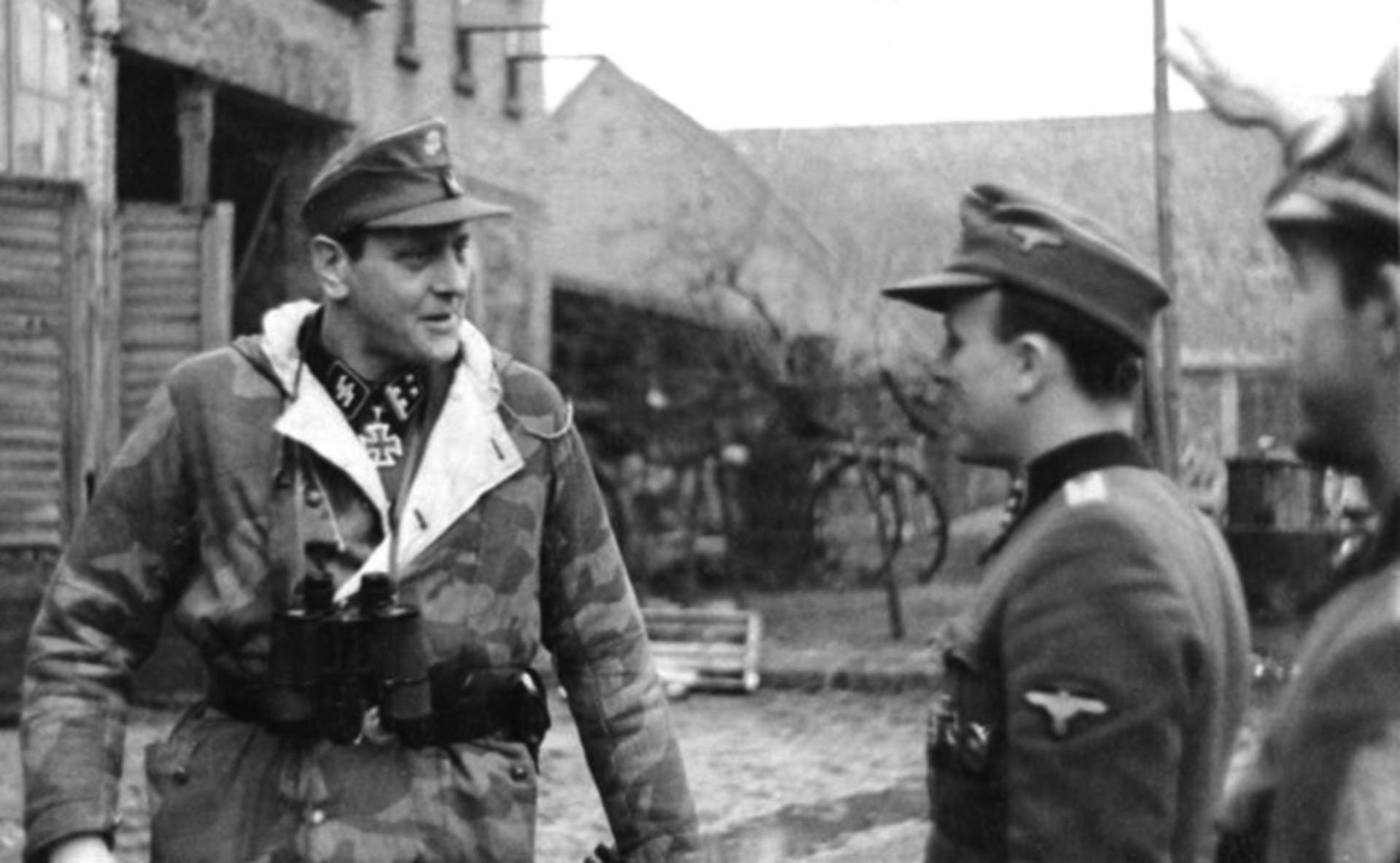
Otto Skorzeny, 1945.02
THE VOYAGER
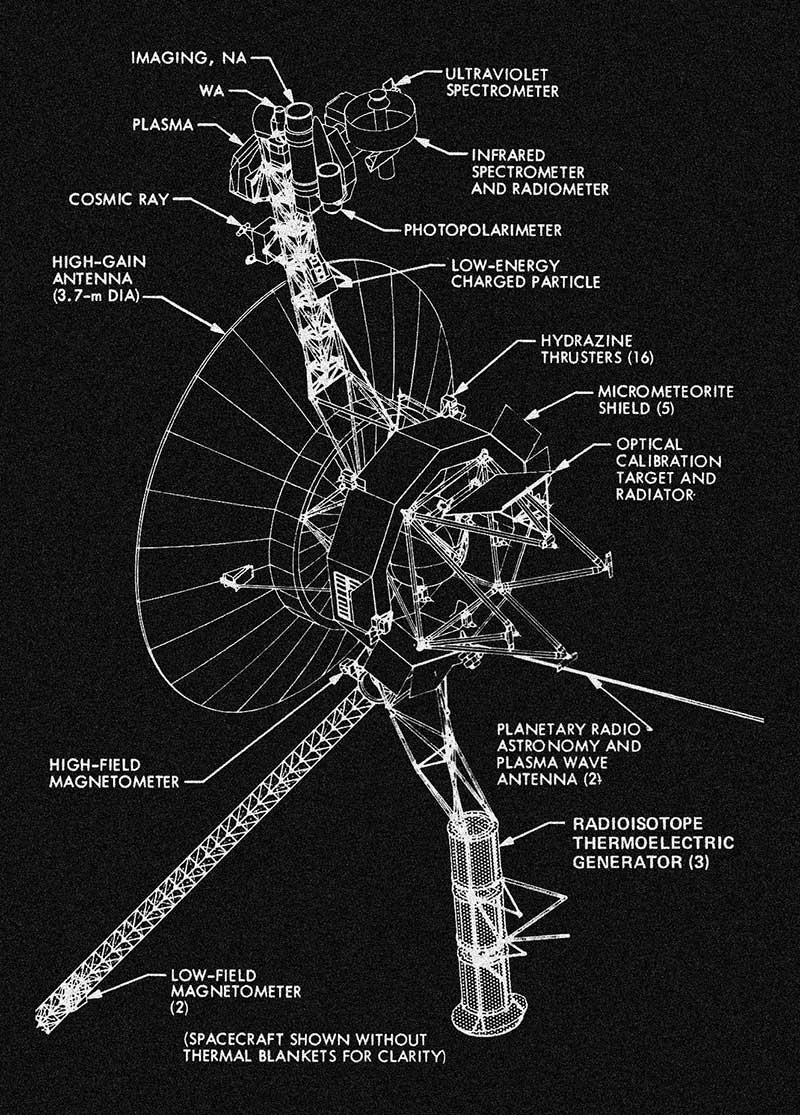
Two decades later, on September 5th, 1977, the will of humankind to triumph over the natural world would experience an event that secured the fate of that great struggle. It was on this fall day that the Voyager 1 space probe would be launched on a trajectory away from Cape Canaveral Air Force Station aboard a Titan IIIE (Centaur) launch vehicle, and into its place in history as the first man-made object ever to leave the gravitational pull of our Sun. It would eclipse the gods of ancient times as a being that exists completely outside of their grasp. And while its original mission was stated to be a simple scientific documentation of the extraterrestrial planets, Jupiter and Saturn, the probe was effectively one of the greatest weapons of the cold war. At the time of the launch it was an enormous propaganda coup for the American government. It was a slap in the faces of the Soviets who had at that point lost the great race for the stars.

As of the writing of this book, the Voyager 1 has exited our solar system for a course that will one day lead it to our nearest neighbor, Alpha Centauri, 4.36 light years away (25,574,434,560,000 miles). I have traveled this distance on numerous occasions as a member of the team that helped to launch the craft onto its historic journey. I have dreamed about this voyage since I was a small boy lying in the back of my father’s truck and thinking about the immensity of the universe. It has been an essential part of my life since 1972 when I was asked to participate in the mission, and I am forever humbled for the ability to see my name alongside this magnificent achievement. Though its origins were rooted in some of the most evil happenings of our history, what it has accomplished on its voyage outside of Earth’s atmosphere has substantially altered the future of humankind.
Cape Canaveral, FL
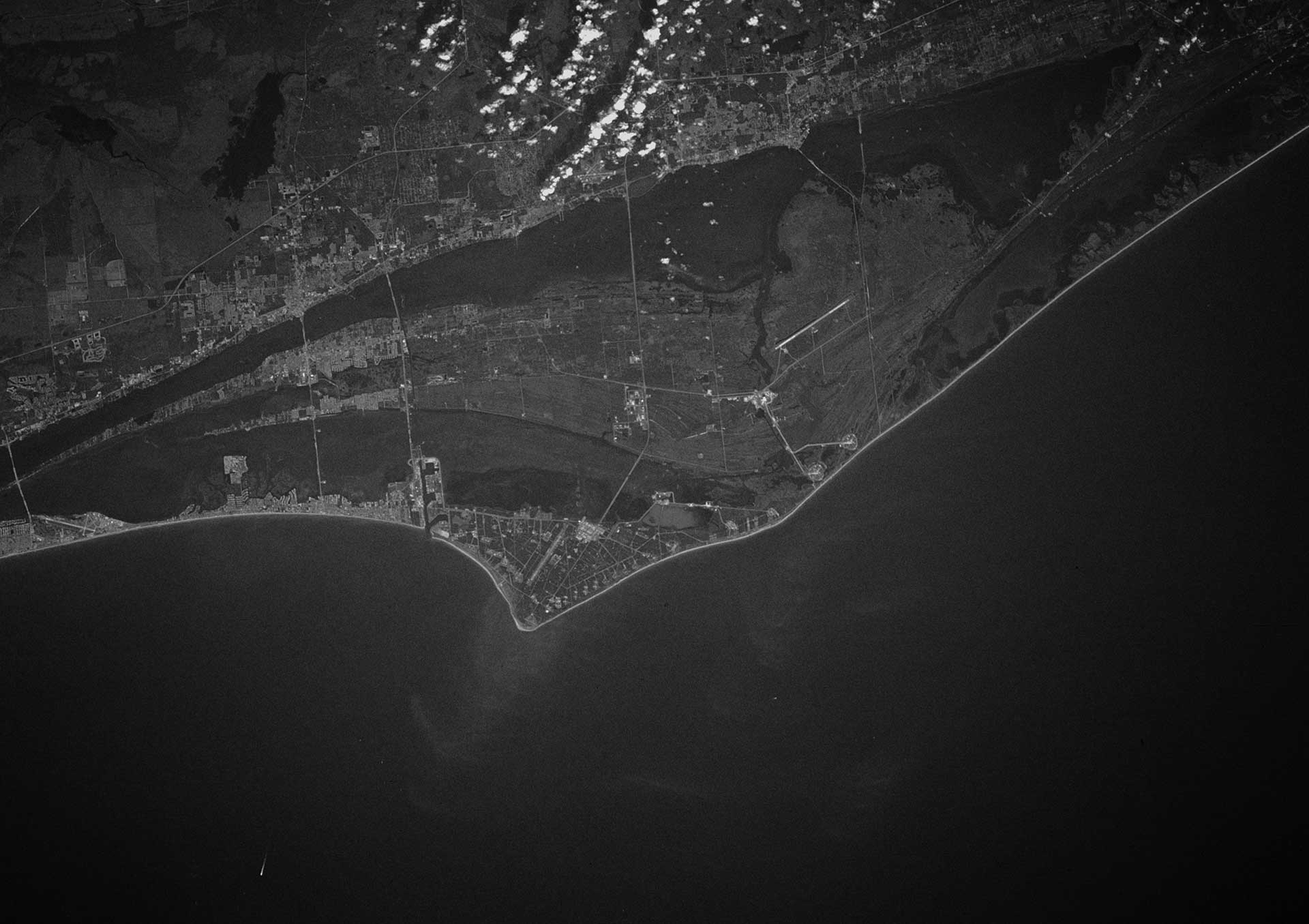
Cape Canaveral, FL
THE ORIGINAL VOYAGER
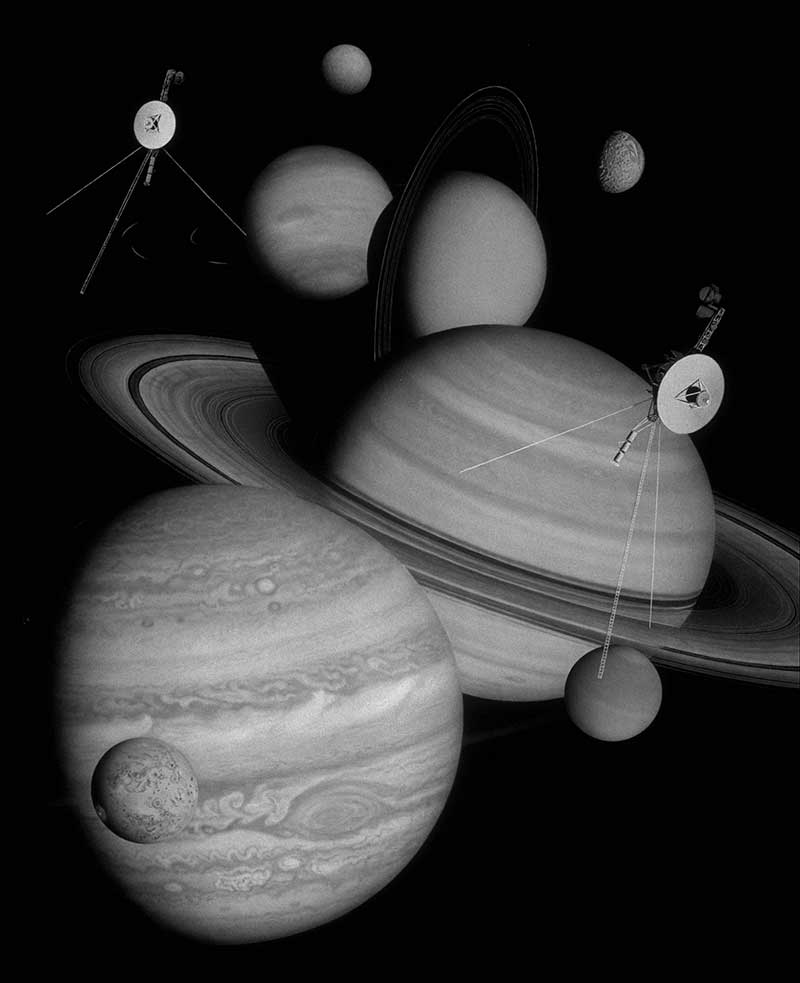
It seems like only yesterday, September 5th, 1976, that I stood in the command station at Cape Canaveral and looked out upon Launch Complex 41. Of course you might be thinking that this date is an error on my behalf, but it is in fact a typo of history. It was on this date that the original Voyager 1, long since forgotten by the majority, was due to be launched into the future only to succumb to its past.
What stood before me on that day, and what I now remember so vividly, was a pair of beautiful, gigantic, titanium beings, containing so many thousands of gallons of the golden fuel that would be used to thrust magnanimously forward into the bosoms of the sky. Atop the massive package sat a singular member; a sensuously white-domed carrier of humanity’s curiosity.
It was a beautiful fall day. As the sun’s rays warmed my skin from the unusually cool morning air, I could smell the heavy ocean that sat not so far from us. It was, I imagined, going to be a day worth remembering. So as the procedures for the event began to unfold, the warming up of the Titan IIIE boosters, the de-icing of its exterior, and the final tweaking of the instruments on board the machine that would blast the Voyager 1 space-probe on a trajectory towards the stars, I was overcome in thinking about where this mission had originated, for me.
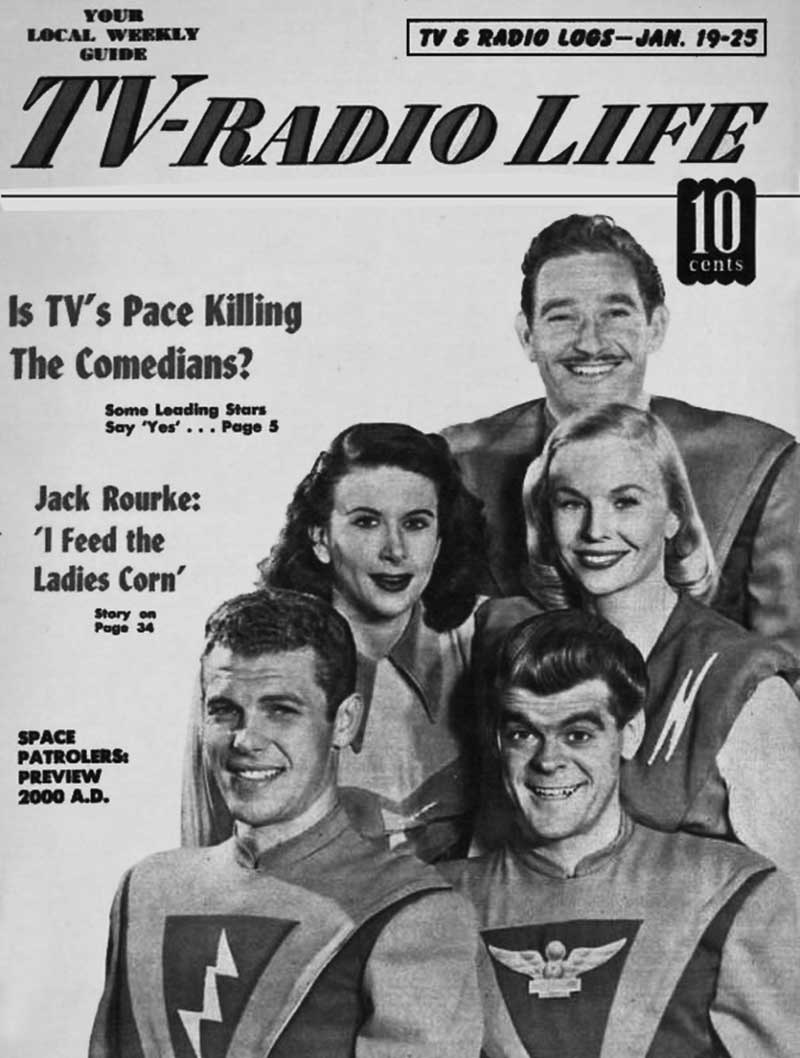
I had dreamed about the idea of exiting Earth’s atmosphere ever since I was a child growing up in nowhere Iowa. I could imagine myself on board Commander Corey’s spaceship “Terra”, as we traveled across the 30th century universe fighting whatever evils we might encounter along the way. The real war that had happened less than a decade earlier did not have the effect it otherwise would were I to have grown up anywhere outside of the North American continent. Of course we had rationing every now and then, and my father made sure to buy me war bonds which I would later cash in to start my college education, but the only action this pre-teen saw during those years was usually accompanied by a Superman serial in which the man with the red cape would make everything alright.
The war, for me, was black and white. The GI’s and Rosie were on our side. The bad guys were Hitler, his henchmen in Europe, and sneaky old Yamamoto in the pacific. The Soviet’s weren’t red but gray just like everyone else. They were almost human looking in fact. They weren’t nearly as scary as the possibility of invasion by a storm of Japanese aircraft carriers.
In the aftermath of the war, I didn’t have a shattered continent to help clean up. I never experienced the thousand year old cathedrals decimated by technology. I never saw a person whom I once knew now lying dead on the streets waiting to be the meal of starving dogs. And I certainly never experienced those horrible camps; the images of which will haunt the histories of Europe for generations to come.
I grew up after those times, and away from all of those terrors. I grew up during a lull of peace. It didn’t last long, but while it did it was perfect. Had I been born only a few years later I would not be the person that I am today. When I grew up there was still no need to fear the sky. There wasn’t any unease when looking at the shooting stars. There wasn’t a scratch in the back of my mind that one of those might be armed with a nuclear head; a surprise attack from one side or another.
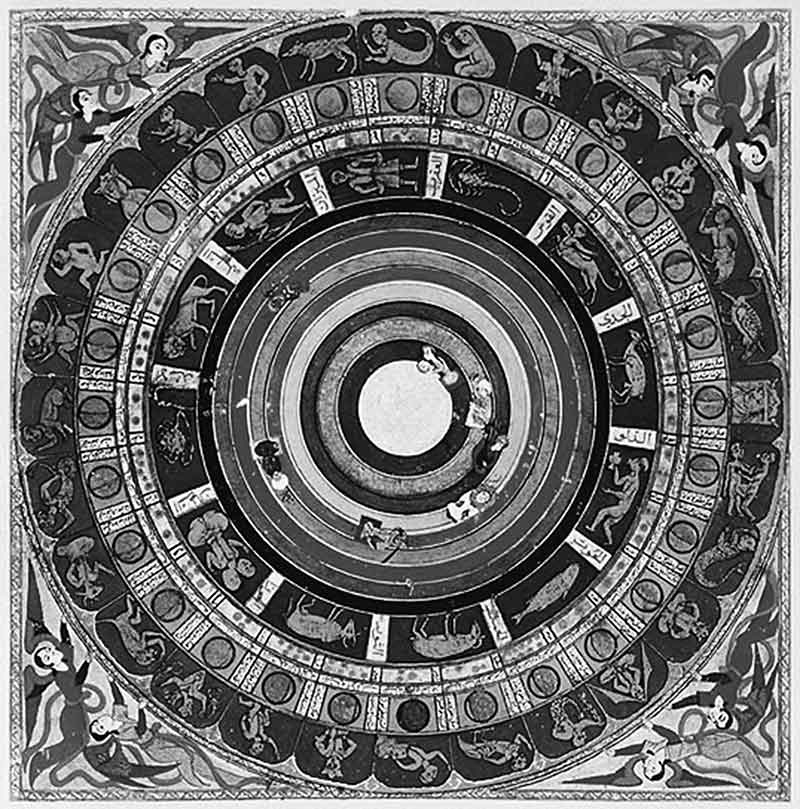
No, I could look up at the sky and dream about the infinite possibilities that it held. I could become overwhelmed with its beauty as I laid out on the flat landscape and looked up in a way that my field of vision was completely engulfed by the white glowing specks. My body could transcend the hard earth below and my mind could escape the banality of my location.
Hiroshima and Nagasaki had been horrible lessons to the world, but the good guys were the only ones that could do that again. The Soviets, now the enemy, did not quite have the capabilities of the US with their nuclear understanding. In fact, their might at the time was limited to a few Fat Man knock-offs made through the efforts of the Rosenberg spies. There weren’t any drills in school that ushered us to the safety of concrete shelters. There was only peace and out of this peace the Voyager mission was conceived.
Hiroshima, Japan, 1945
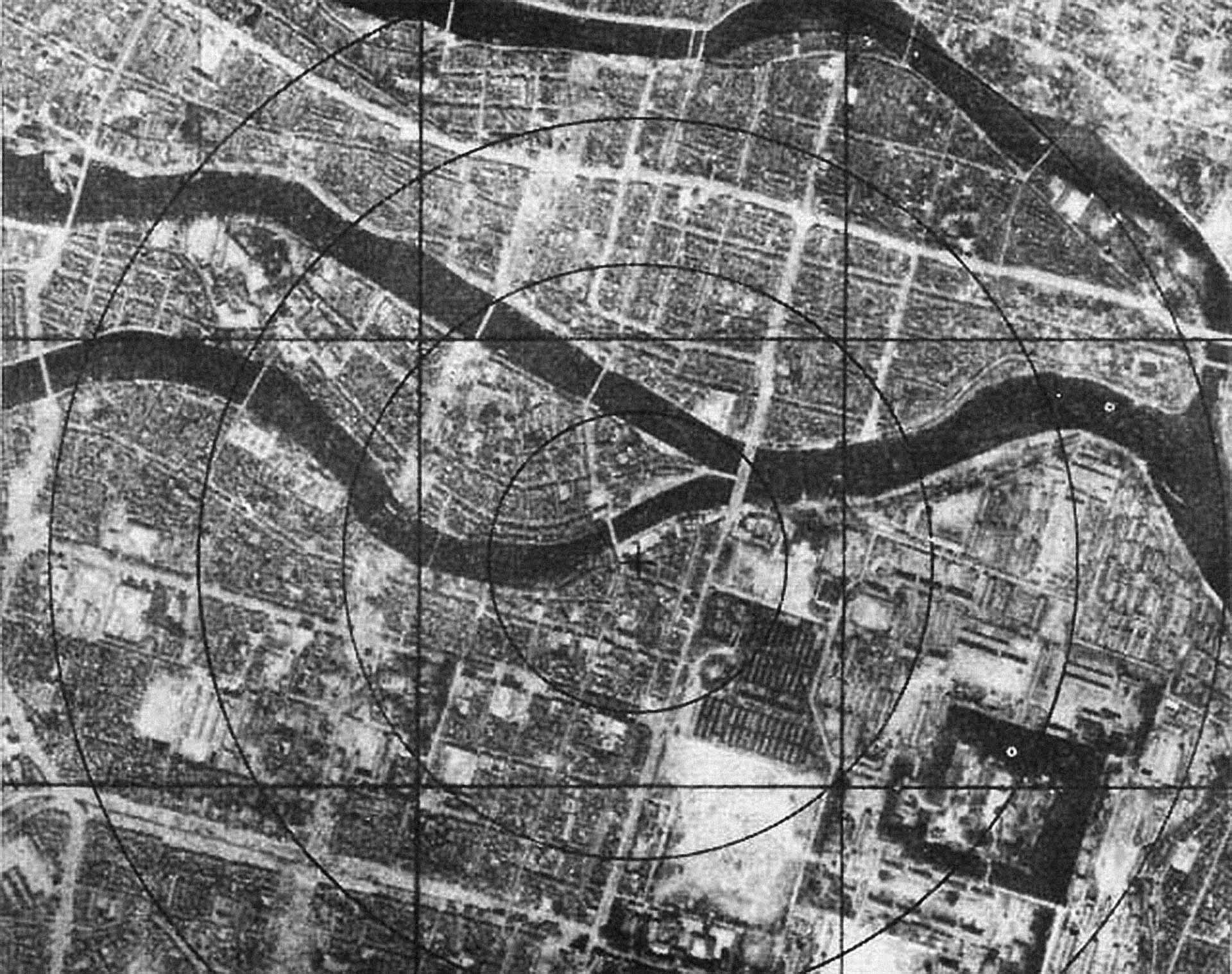
Hiroshima, Japan, 1945
MARINER 11
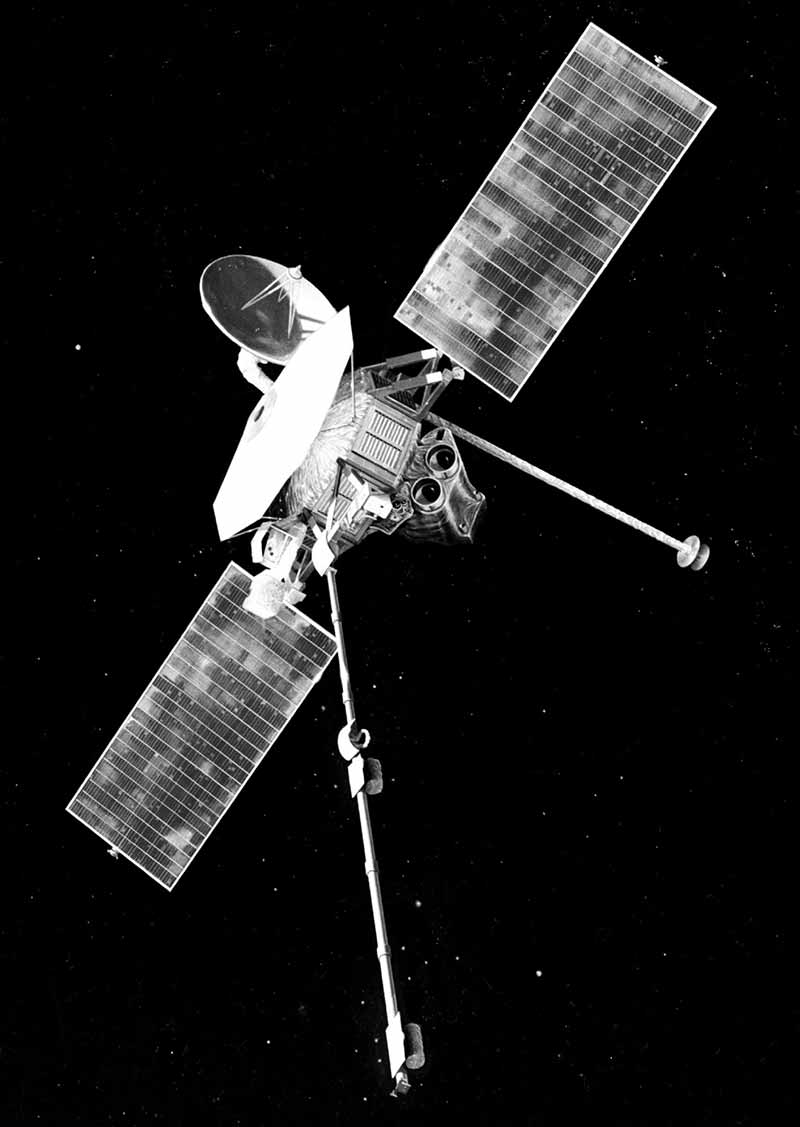
Originally, the plan for Voyager began as a continuation of NASA’s Mariner missions which were a series of planetary probes of our inter-solar system. Like previous Mariner excursions, it would be planet specific; a mission to join the moons of Jupiter’s orbit and live out its life alongside the gas giant. Early on I was proud of the mission for this fact. I must have been caught up the spirit of the times though, i.e. the biggest being the best. It was going to be a grand halftime of sorts, the great giant of Jupiter, Zeus the god of all gods, would be accompanied by a completely insignificant man-made object. Of course my ego was in a little bit of a twist over this. I enjoyed imagining something that I had created reaching out and encountering God first-hand. However, I was young and I couldn’t see that far past the end of my nose.
Eventually, as I grew older and our budget grew smaller, Voyager evolved from the planet-specific robotic-lander missions of the Mariner crafts to one more in line with the Pioneer quests. These were unique for the time in that, while there were minor planet related missions such as the documentation of planetary surfaces, the ultimate goal for the Pioneer crafts were simply to reach out and touch. This idea, which initially seemed like a much less heroic endeavor than penetrating the atmosphere of a planet with our landers, eventually grew on my imagination. I started to consider the possibility of an object continuing on a path for a million years, unimpeded by the emptiness of space. I grew excited by the prospects of what it might encounter.
I could imagined the moment, on the planet of a completely alien life-form, when a being would look up in their sky and witness the passing of the Voyager. I liked to think that its passing would coincided with a great event in the being’s life. It could be completely coincidental to the start of a great famine or the crowning of a new king and, in this instance, the Voyager would acquire some kind of significance to the being and its civilization. It could in effect become a god, and an ideology could be formed around its narrative. A mythology could be created to explain its existence.
And so it was on the quiet morning of September 5th, 1976, that all of my hopes and dreams for this expansiveness would explode into a ball of fire alongside the destruction of the original Voyager 1. It was a sad day indeed, to see four years of intense research destroyed in a flash of orange and red. And it was that day, one year before the successful launch of the second Voyager 1 that my illusions about the program died with the original. I became an adult, no longer fancifully dreaming of joining the cast of Space Patrol, and I was finally able to understand my own destiny, and thus take control over it.
Engraving of ancient stars
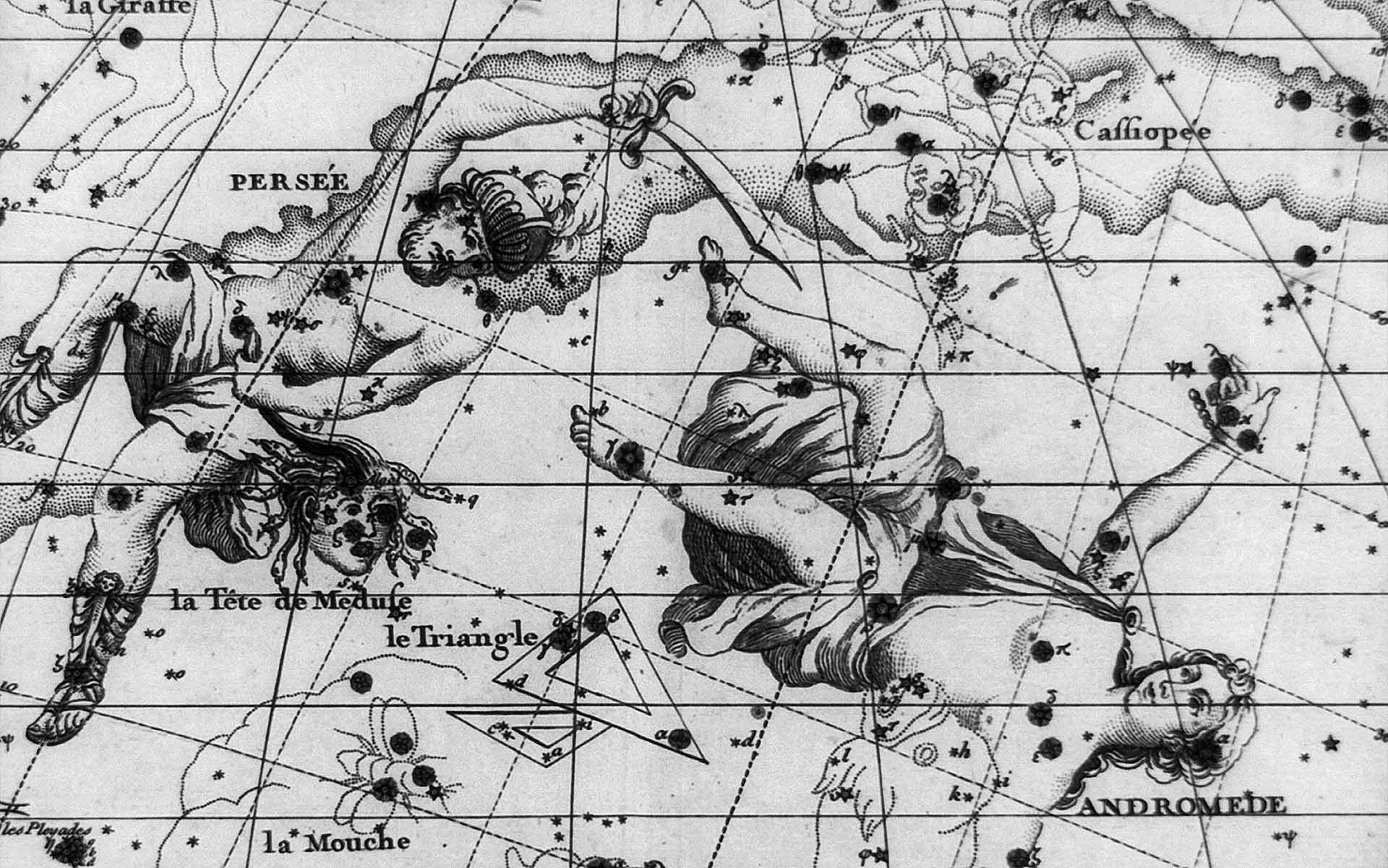
Engraving of ancient stars
THE JACKAL
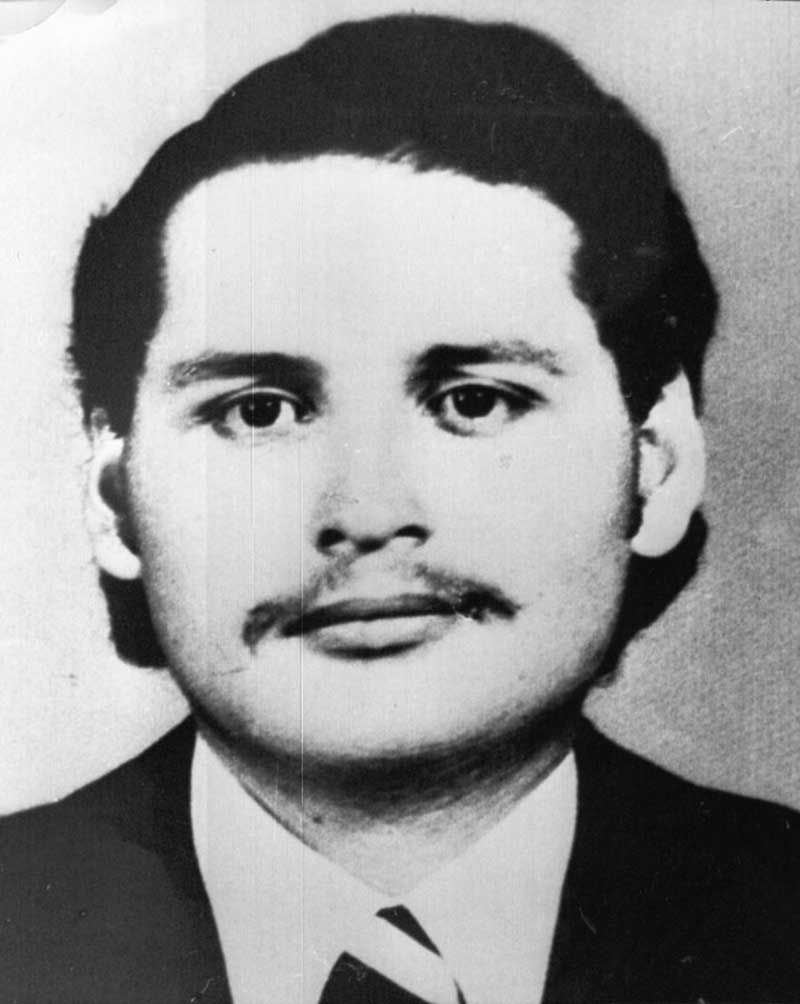
Ilich Ramírez Sánchez, otherwise known as Carlos the Jackal was, in 1976, a fully operational international terrorist. Born in Venezuela four years after the end of World War II, he quickly left the South American countryside for the glamour of the Cold War European underworld of spies and killers-for-hire. Named after the leader of the Russian Revolution, Vladimir Ilich Lenin, he would eventually attend (and drop out of) the Patrice Lumumba University in Moscow. Illichj was a terrorist of a different era. While still interested in destruction, he was less concerned with a body count. He was a murderer, this must never be forgotten, but senselessness had not yet become synonymous with the action the way that it would in future terrorist acts. He is not a better man because of this, but it has always provided him with a small sense of romantic charm.
Ilich was a Marxist, a man that believed in the fundamental values of Karl Marx (for whatever that was worth at this point in history). And while the leaders of the Marxist societies that he so appreciated (and up to this point had become ingrained in) struggled with the corruption and despotism that seemed to always appear within them, Ilich fought for their name against the United States and the puppet regimes that could be just as equally cruel and intolerable. He was, like others that have appeared before him in this story, a man divided; a puppet of his ideals. Somewhere deep within Ilich there was certainly a good intention to be found, but his handlers had objectives that would overwhelm those instincts.
Hostages & their Terrors, 1975.12.22

Hostages & their Terrors, 1975.12.22
THE OPEC RAID
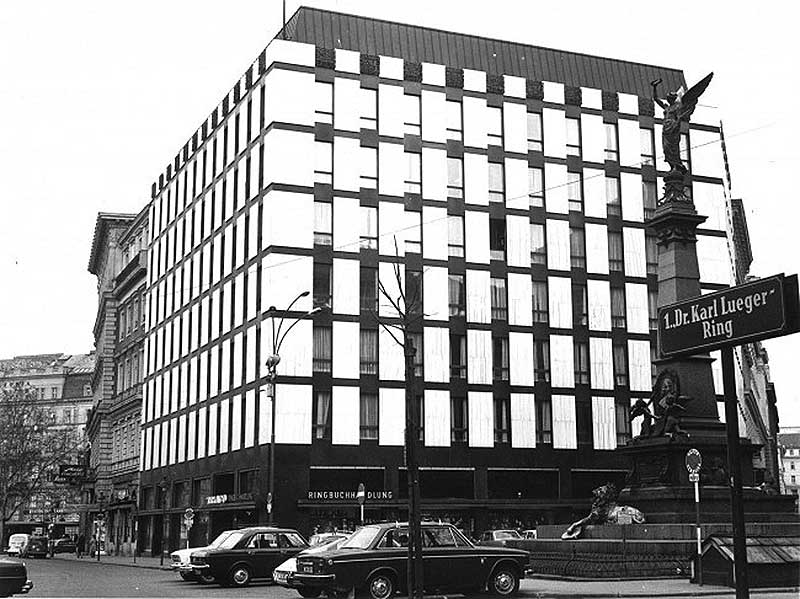
On December 21st, 1975, a small group of fighters led by Ilich overtook a meeting of OPEC leaders as they convened in Vienna, Austria. Taking approximately 60 hostages (oil ministers and their attachés from all of the major oil exporting countries of the world), the captor's goal was to have a communiqué read over the Austrian airwaves detailing the trials and tribulations of the Palestinian cause and, to a larger extent, call for the complete liberation of Arab countries from western influence. A noble cause indeed, it was ironic that the OPEC cartel had itself been created as a consolidation of the oil producing countries in order to combat the influence of western corporations that intended to exploit them. At this point in Ilich’s life, however, he had for whatever reason aligned himself with the causes of the Popular Front for the Liberation of Palestine (PFLP), a group whose only interest was the dissolution of the Israeli state.
This fact of course leads us back to the closing days of the second world war when the Jewish state of Israel had been carved off of various countries in the holy land. During the war, European Jews were both deported to the future state and sought it out as a safe haven against the rise of Nazism. After the war, it had been fought over tirelessly despite it being a seemingly worthless plot of land; save for the fact that it maintains great significance for a majority of modern day religions.
Nevertheless, one day after the raid's beginning, on December 22nd, 1975, Ilich and his comrades released the majority of the captives without harm. In the process they disregarded the PFLP objectives for the mission that dictated the execution of a number of hostages as a demonstration of the organization’s severity in their cause. The Austrian government, as part of the Ilich’s list of demands, provided a DC-9 jet to escort the terrorists and hostages to Tripoli, Libya, where upon arrival they would all be safe from repercussions; judicial or otherwise. This, unfortunately, left Ilich in bad standing with the PFLP and, upon the next meeting of the group, The Jackal was expelled from their cause.
PFLP Fighters, Jordan Valley, ca. 1969
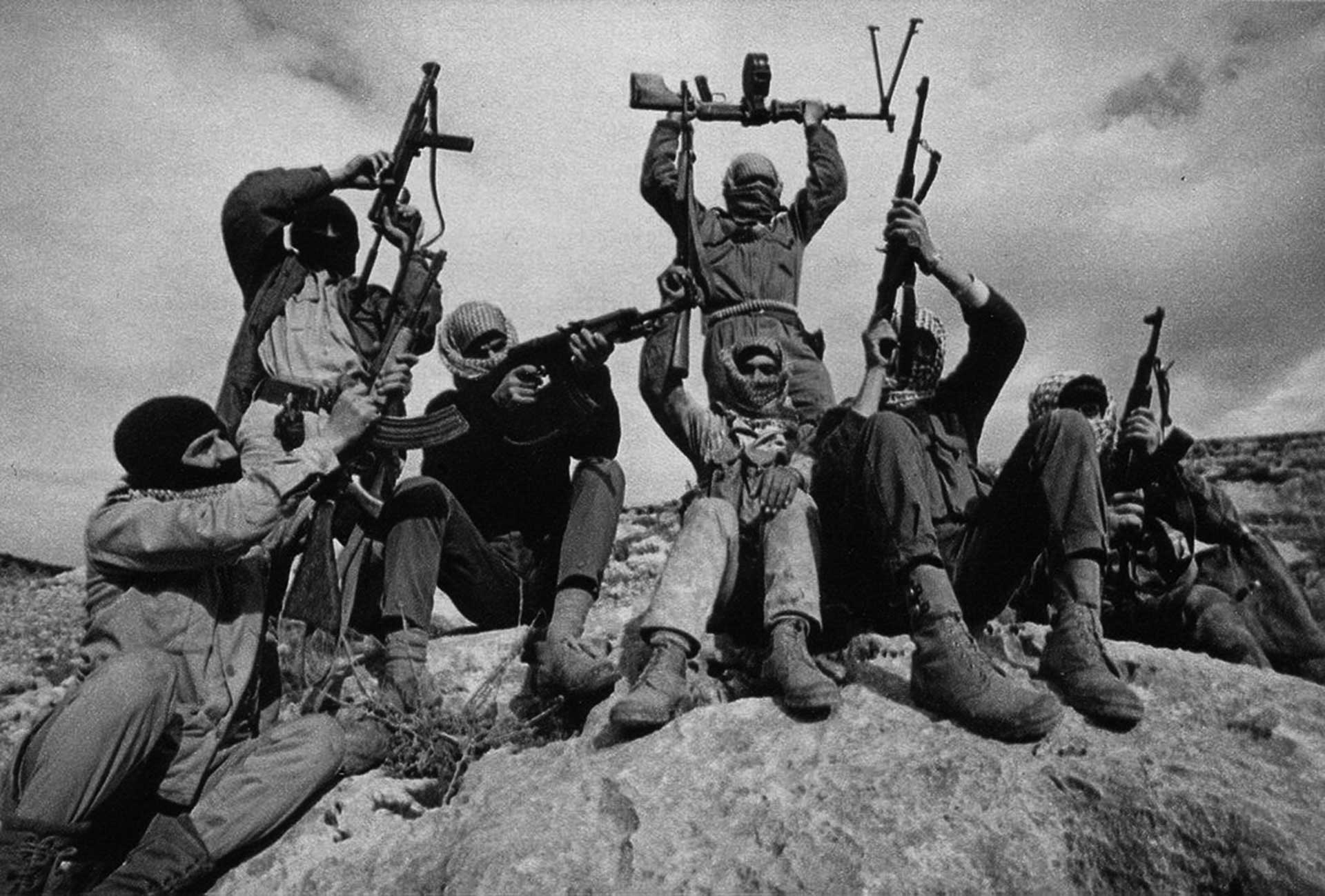
PFLP Fighters, Jordan Valley, ca. 1969
OPERATION SNOWFLAKE
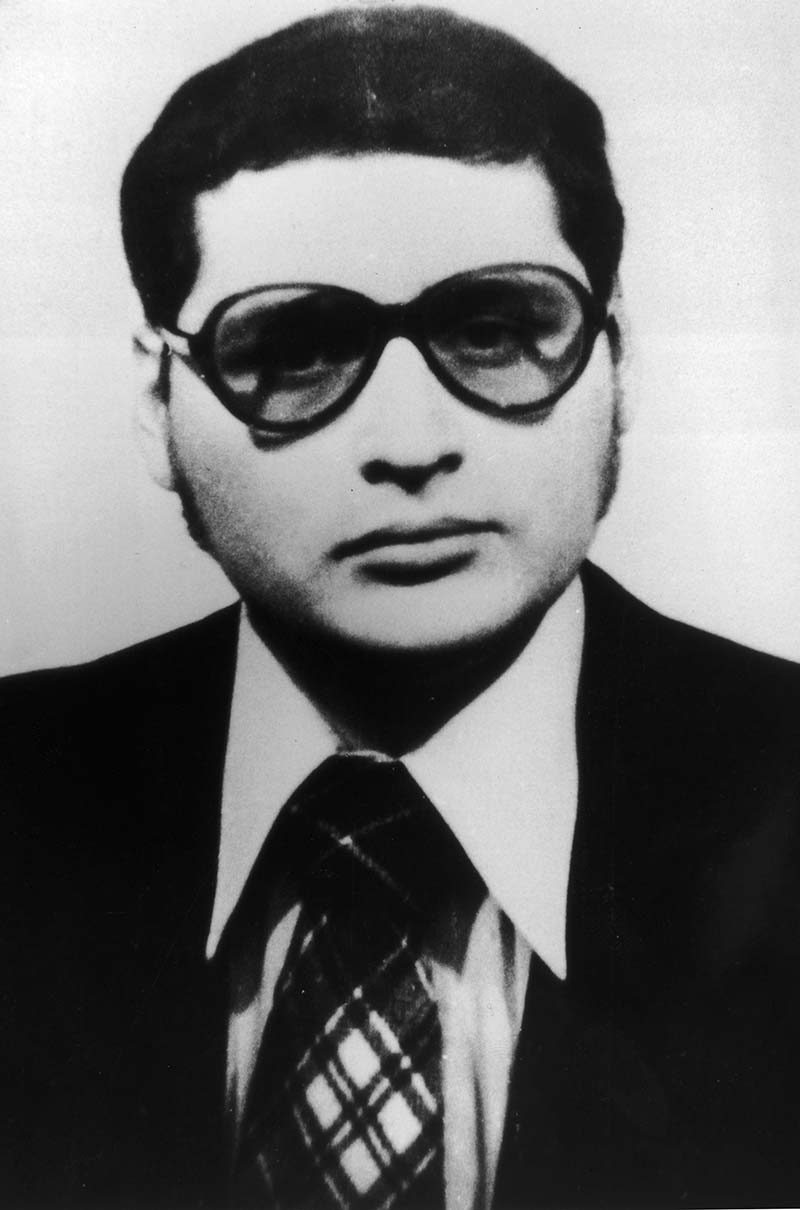
A few months later, in early 1976, now hiding in Yugoslavia Ilich was offered a mission by his new Soviet handlers. The flamboyant terrorist had found himself at an ironic crossroads of ideologies. His OPEC mission, along with a significant part of the anti-Israel actions throughout the Middle East, received funding from François Genoud. This was the same Swiss financier responsible for administering funds to the Nazi commando, Otto Skorzeny, for use in creation of the ODESSA ratlines, as well as, the retrieval of the Osenberg list for use in a postwar revival of the Hercules Project. In contrast to this, the Soviet Union, a strict enemy of the Nazi ideology, now allowed Ilich to not only roam freely throughout the republics, but they also set him up with an apartment in East Berlin and a support staff of seventy-five. To further complicated his remixed ideologies, Ilich was tasked with an act of reprisal against François Genoud and his Hercules Project.
At this point, and unbeknownst to myself or any of the other civilians working on the Voyager Project, certain elements of the Nazi’s Hercules initiative had been secretly incorporated. The United States government, possibly out of nothing more than curiosity, allowed some of the Osenberg scientists who had previously worked on the Hercules Project in Germany to continue their efforts within the constructs of the American NASA program. And so it went that a special cargo had been loaded onto the original Voyager for its fateful launch on September 5, 1976. Semen, taken decades before from Nazi commandos, was secretly loaded into a storage compartment on board the Voyager. Unfortunately, it was a plan already well known to the Soviet leadership via their extensive network of spies.

Had the German-American scientists working on the Voyager project simply exchanged the original Nazi semen for a more neutral specimen the events that unfolded here on out would have been of little to no significance. The original Voyager would have launched without incident and the specimen would, at this time, be floating in deep space. Instead, as retribution for the use of the Nazi specimen, under direct orders from Premiere Brezhnev, the Soviets provided funding for Ilich to exterminate the original Voyager.
The details of Operation Snowflake are not completely understood even to this day. What is know is that Ilich and a small group of comrades installed an explosive device on board one of the Titan IIIE’s main rocket thrusters. Honestly, it could have been something as small as a hand grenade seeing as the launch was a controlled explosion anyways. It probably had a remote detonation controller triggered upon an observer noticing the ignition of the thrusters.
In terms of its objective, Operation Snowflake was a complete success. The Voyager was eliminated and no human casualties were reported. Ilich returned to Eastern Europe and continued his own brand of pre-insurgency terrorism for the remainder of the decade.
Cape Canaveral Launch Complex
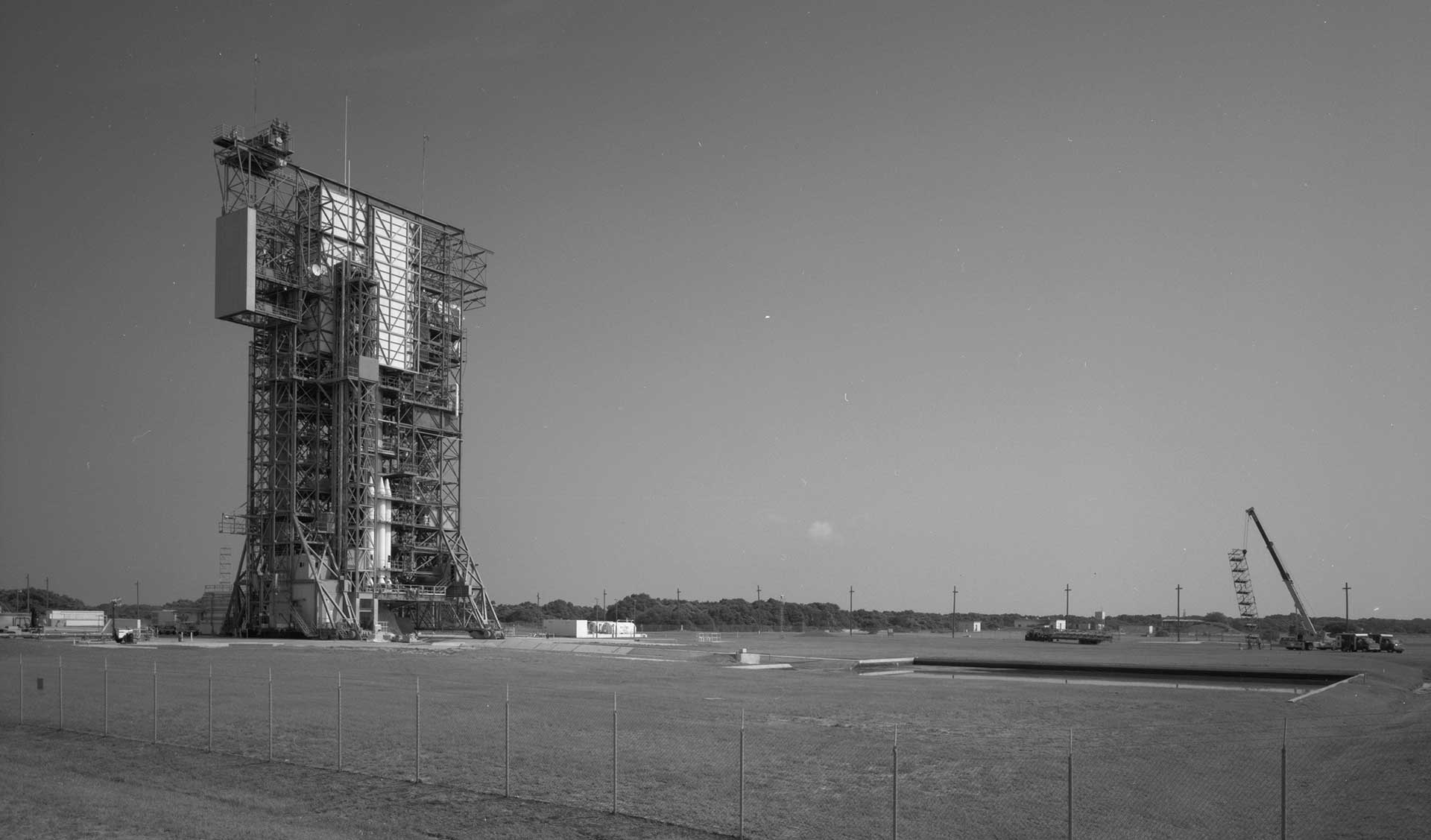
Cape Canaveral Launch Complex
DEATH OF THE VOYAGER
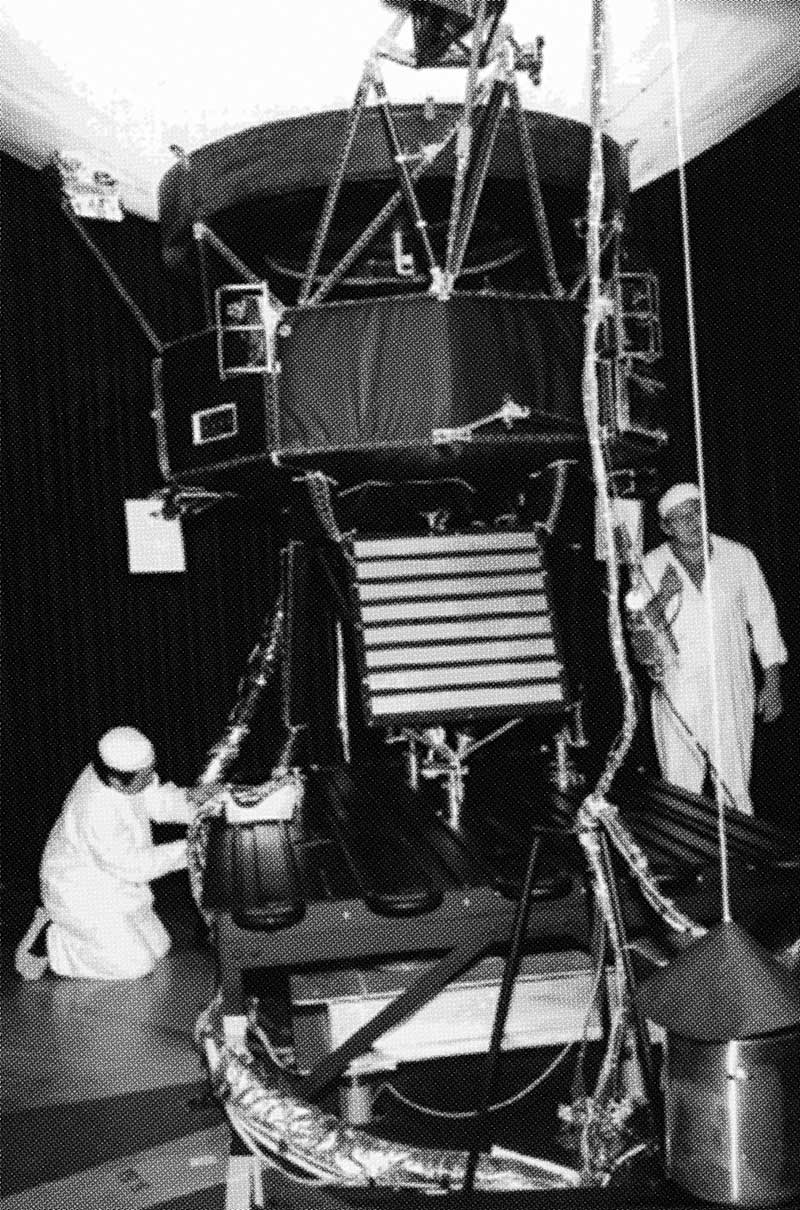
I sat on the observation deck for several hours that day. I tried to remember back to those peaceful times lying in the back of a truck in Iowa, but the smell of the burning fuel engulfed my nose and always brought me back to Florida. Later on I, along with the rest of the Voyager team, would find out about the Hercules Project and the disputed cargo that the space probe was intended to carry. Our worlds were turned around. An endeavor so seemingly noble had been hoodwinked and used for a hair-brained science experiment. It was shocking to try and think that the Soviets gave the preposterous experiment enough consideration to blow the damn thing up.
The American public never found out about the original Voyager launch, and our team was strictly advised not to discuss it. Well they didn’t tell us not to. They just reminded us of the incredible weather balloon experiments that were taking place in “Frozen Balls Alaska” should we choose not to utilize discretion. The government decided on a re-launch. A new Voyager was created, two in fact, and a year later the process began again. The sense of achievement and optimism weren’t quite the same for the second round, but the curiosity remained. This of course was most likely due to the arrival of Carl.
